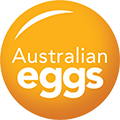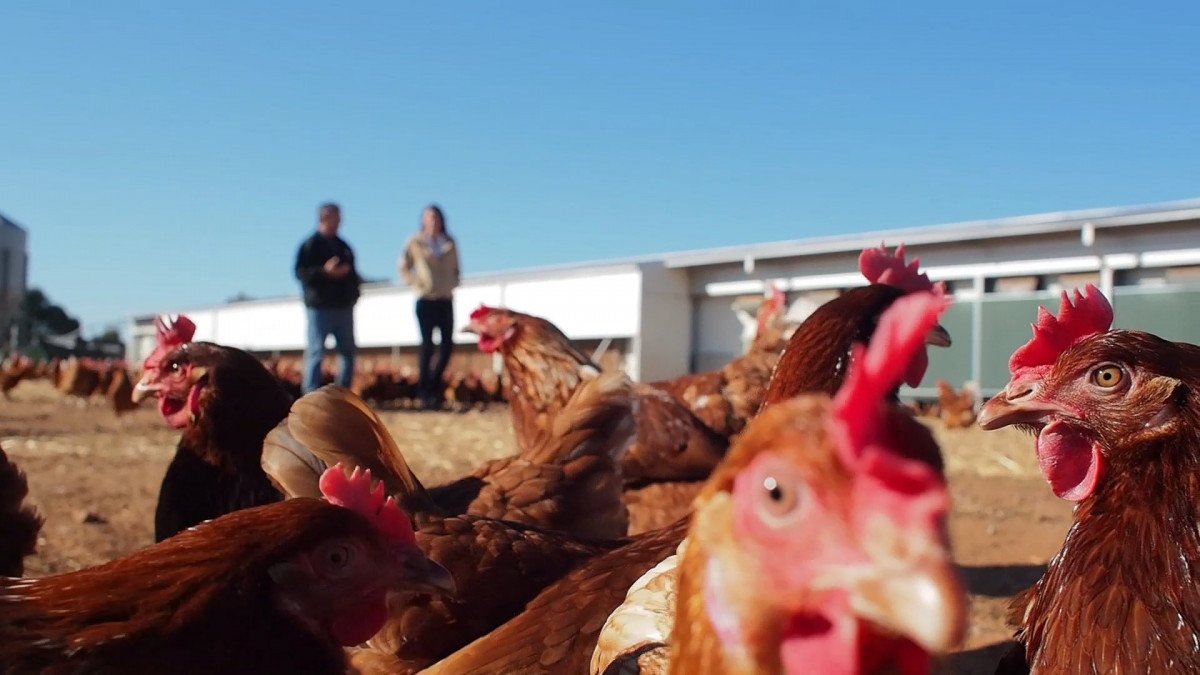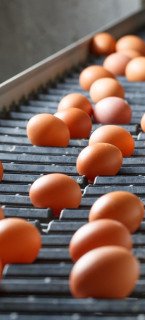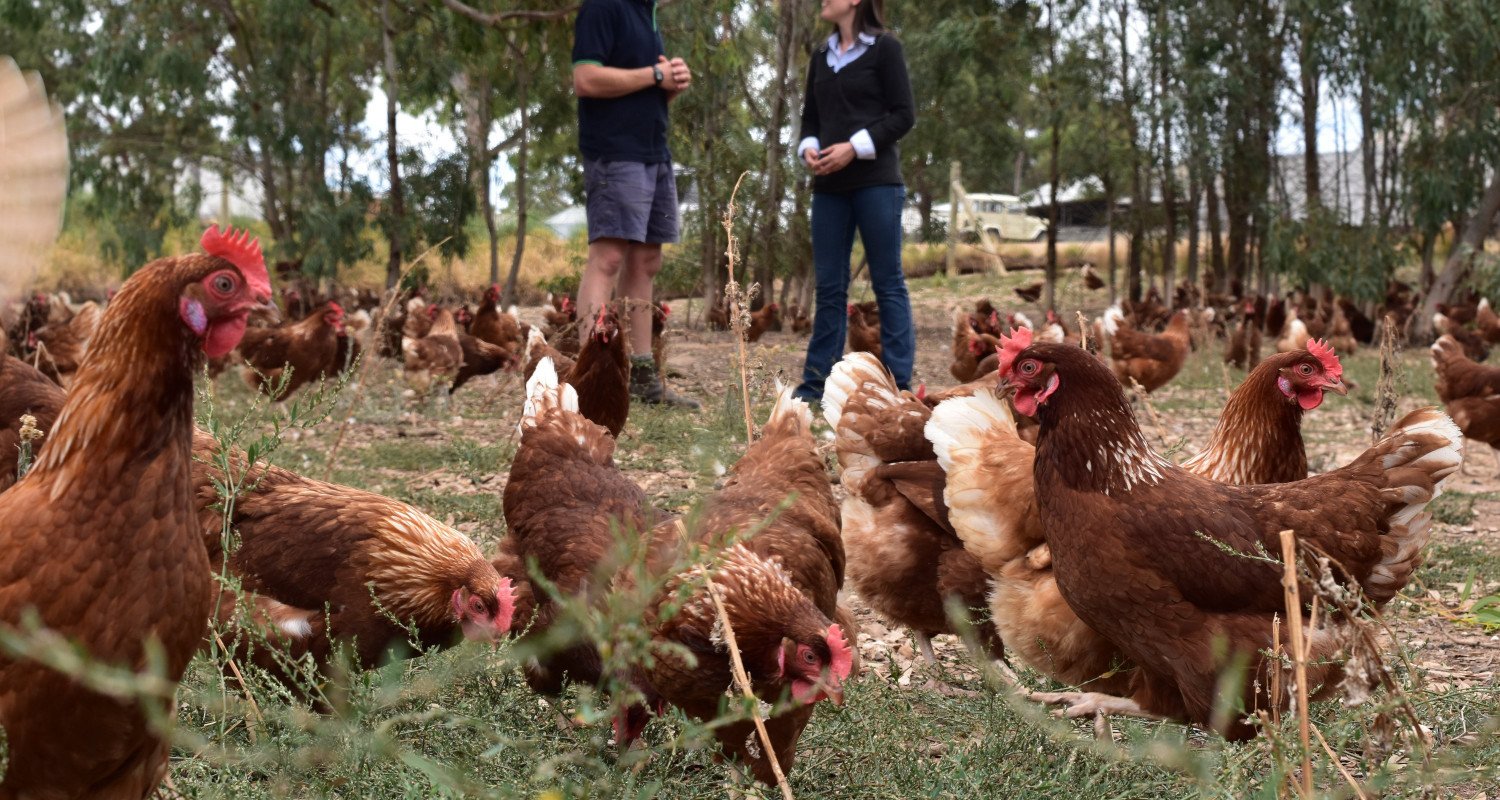
UTS researchers develop AI system for monitoring hen health
UTS researchers develop AI system for monitoring hen health
- Publication
- Reading time 4 minutes

Many Australians are big consumers of free-range eggs. They like their hens to roam free on green pastures, or at least large barns, rather than being kept in cages. However, this freedom can also result in increased dangers to hen health.
Researchers from the University of Technology Sydney (UTS) have developed a world-leading artificial intelligence based system to monitor the movement and behaviour of cage-free hens to improve their health and welfare, and minimise the dangers.
Professor Jian Zhang and his team from the Multimedia Data Analytics Lab in the Global Big Data Technologies Centre, based at UTS Tech Lab, are working to develop a real-time video monitoring system, which was recently trialled on an egg farm in Windsor, NSW.
The project is funded by Australian Eggs, a member owned not for profit organisation that invests farmer levies and public funds in research and development on behalf of the egg industry.
“The farm in this project that is trialling the technology has an average of 8,000 hens spread across multiple sheds, and it’s difficult for farm staff to continuously monitor hen behaviour,” Dr Zhang said.
“Cage-free hens have greater freedom to roam and forage, however there is a risk that they can flock together and ‘pile-up’, which can result in hens being smothered. While it is not common, if a pile-up does occur, currently there are no warning system to alert farmers that this might be occurring,” he said.
Effective controls and predictors of risk are not known, so the egg industry is looking to develop effective reduction strategies. Additional to the development of the real-time monitoring system, Australian Eggs has funded a research project that is currently underway to understand what these risk factors are.
The new system alerts farm staff to any crowding behaviour, as well as monitoring the hens’ access to food and water to observe changes in behaviours, and any lack of movement in individual hens, which could indicate an injury or illness.
Rowan McMonnies, Managing Director of Australian Eggs, said it was exciting to see a solution that could reduce labour requirements, minimise human intervention in sheds and improve animal welfare.
“This important investment in AI-technology can not only lead to happier, healthier and more productive hens, but also improve farm management and reduce costs,” Mr McMonnies said.
The system currently being trialled uses four cameras: two inside and two outside the sheds. The system has been designed to be scalable and can be increased depending on the area. The technology incorporates pattern recognition algorithms to count and monitor flock density and behaviour.
The UTS team includes poultry and animal behaviour specialists to help analyse and interpret hen behaviour. The next phase of the project will include a deeper analysis of behaviours such as drinking, feeding, foraging and standing.
“Poultry are very sociable and gregarious animals, so we need to build an ethogram, or catalogue of behaviours, which includes both individual and interactive behaviours, to better monitor growth and welfare,” Dr Zhang said.
There are also plans to build a mobile phone app that can alert supervisors to potential trouble. The app will include machine learning technology to improve the system with feedback from users.
The UTS team will run a larger trial across multiple farms in the coming months. Once the trials are complete they hope to commercialise the technology so that it can be implemented on a wider scale. There is also potential to expand the technology to other areas of farming.
ENDS
For media enquiries and or interviews please contact:
Hannah van Otterloo l Senior Account Manager l Illuminate Communications
M. 0432 053 937
E. [E-Mail not displayed]
About UTS
UTS is a leading university of technology located in the heart of Sydney’s innovation precinct. With more than 40,000 students, UTS has a distinct model of learning, strong research performance and a leading reputation for industry and professional engagement. Underpinned by social impact and a continuing commitment to sustainability, UTS is rated the No.1 ‘young’ university in Australia in the QS and Times Higher Education rankings.
UTS Tech Lab is a collaborative industry research facility that co-locates large-scale engineering infrastructure with specialist laboratories dedicated to communications, sensor development and computer sciences, including data analytics and AI.
 >
> 

